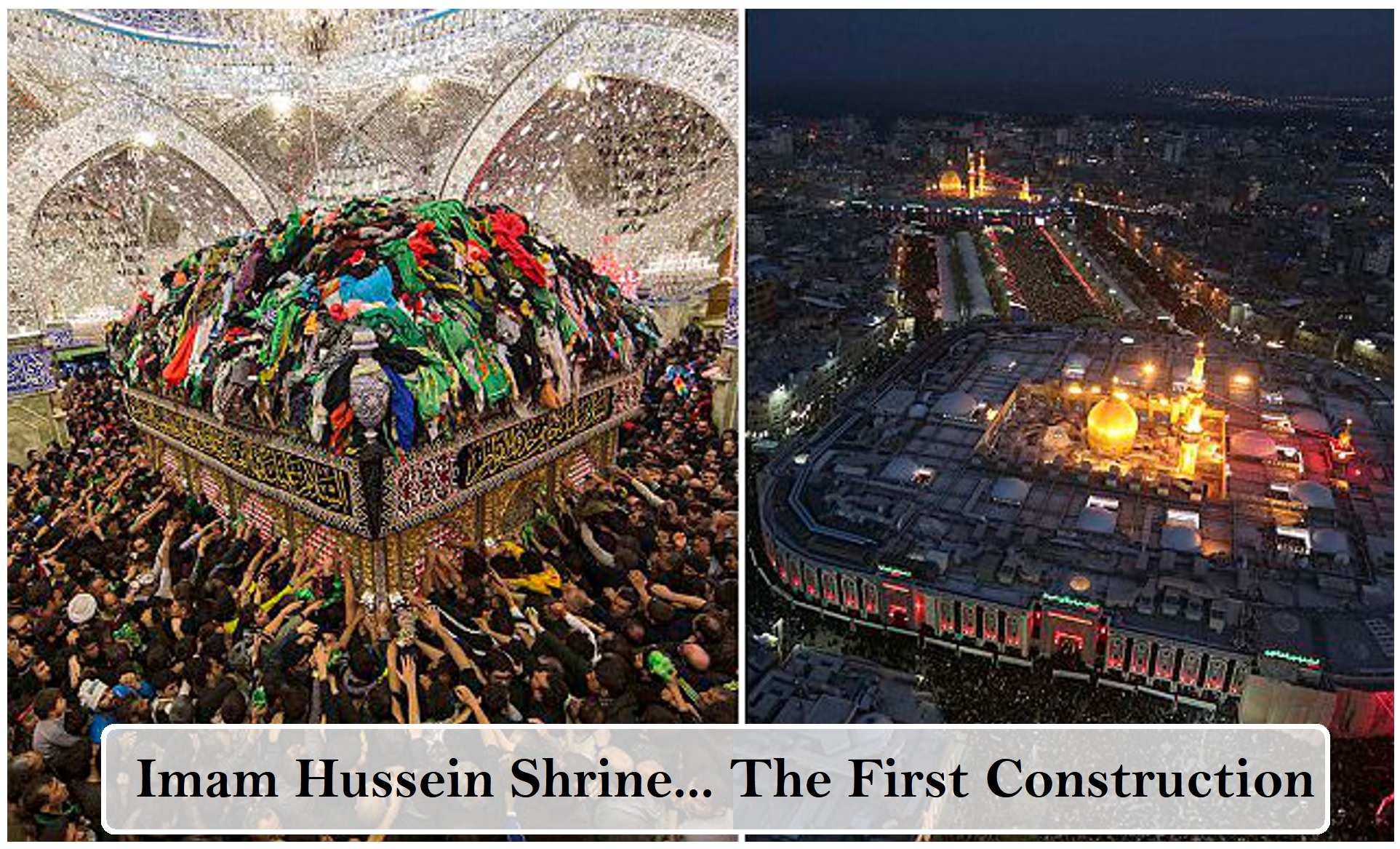The holy shrine of Irnam Hussain (A. S.), also known as al-rawdha al-Hussamiya, is considered as one of the most important shrine and landmark in the city of Karbala. It includes the tomb of Imam Hussain (Prophet Muhammad's grandson), that of his son and another for his companions.
The architecture of al-rawdha al-Hussainiya has seen various stages of development in its long history starting from the event al-jaff in 61 A. H. (680 A. D.) to our present day. The following are the most important stages:
The first construction to be raised on the grave of Imam Hussain (A. S.) Was built by al-Mukhtar ibn Ubaida al-Thaqafi in 66 A. H. (686 A. D. ). He built a tomb over the grave and covered it with a clay brick dome. He also built beside the tomb a mosque with two gates, one on the southern side and the other in the eastern side. This dome is considered the first one to be built in the Islamic period.
However, other historians report that the dome of Masjid Qubbat al-Sakhra in Jerusalem, built by the Arnavvid Caliph Abdul Malik ibn Marwan in 72 A. H (691 A. D. ), is the first dome to be erected in the Islamic period.
This conflicting conclusion is perhaps because these historians could not carry out a comprehensive literature survey or may be due to their little knowledge in the architectural history of the city of
Karbala.
This domed structure was still standing in place up to the period of the Abbasid Caliph Haroun al Rashid. However, at the end of his rule, he demolished and levelled it to the ground and finally ploughed the location of the grave in 193 A.H. (809 A. D).
Source:
- Holy Shrines of Karbala: By Raouf Mohamed Ali Al-Ansari
[P. 118-119].

